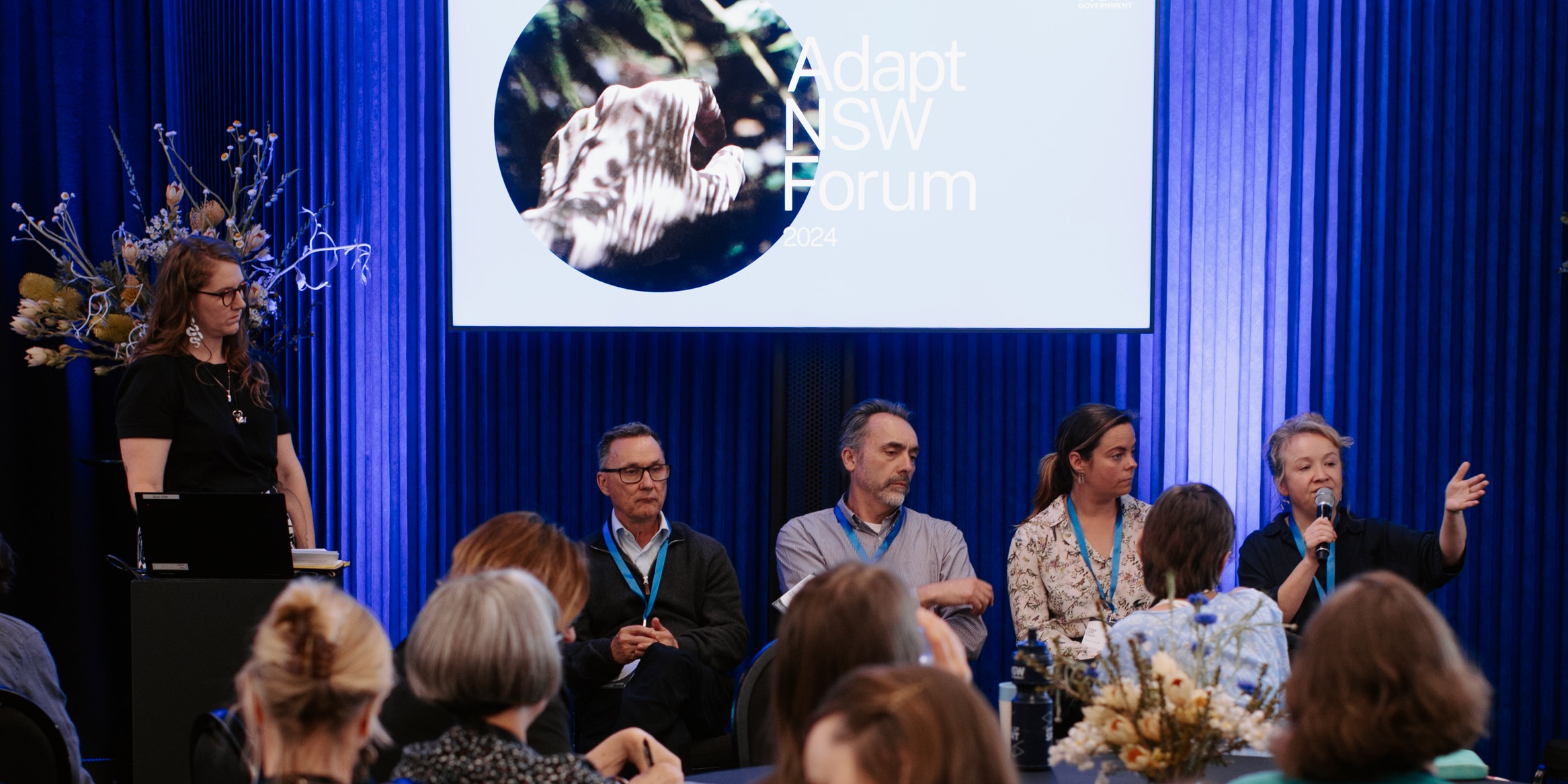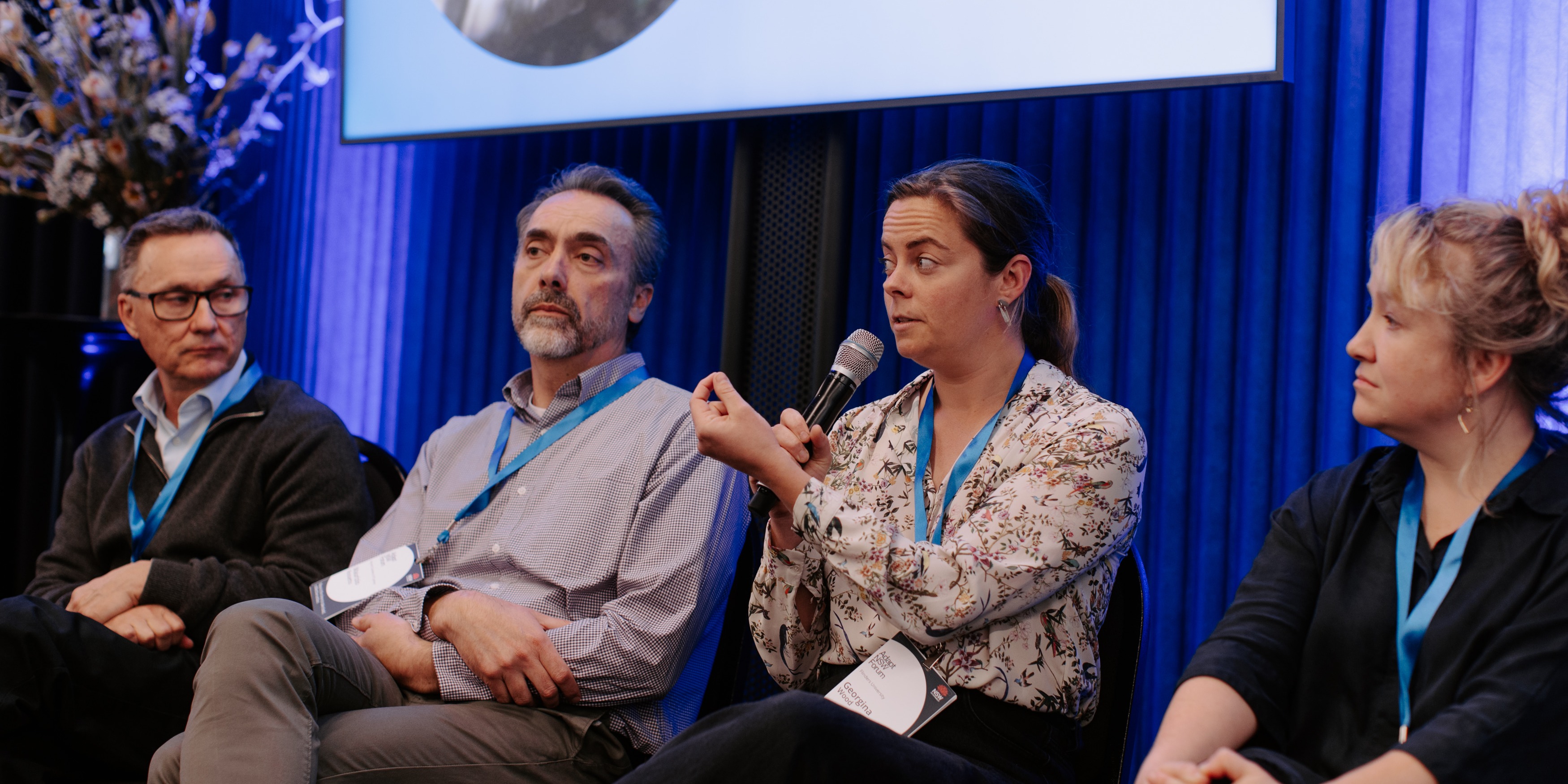Biodiversity loss and ecosystem collapse are among the top three global risks over the next decade, according to the World Economic Forum Global Risks Report.
Australia’s grasslands once covered “millions and millions of hectares of land”. Today they exist in fragments, covering as little as 1% of their original range, restoration ecologist Paul Gibson Roy told the audience at the AdaptNSW Forum 2024.
Grassy communities – savannahs, prairies, steppes, woodlands and meadows –are under dire threat around the world due to clearance for cropland, pastures, plantation forests and cities. Their conservation is a complex and urgent challenge in the face of a changing climate. The solution is not to abandon farming, but to take a “more balanced approach to food and fibre production” that integrates grassy communities into our landscapes, Paul said. “If we are serious about restoring nature, we can't just be telling farmers ‘It’s your job’. It’s all our jobs.”
Paul’s impassioned advocacy for grassy communities was one of the presentations in a compelling session at the AdaptNSW Forum 2024 on restoring nature in a changing climate.
There’s 185,000 kilometres of roads in New South Wales. Most of them are covered with weeds. What if we took the weeds out and we returned them to native wildflowers and grasses?
Paul Gibson-Roy, Project Officer, Department of Climate Change, Energy, the Environment and Water
Australia, among almost 200 countries, adopted the Kunming-Montreal Global Biodiversity Framework in December 2022. This outlines an action agenda to halt species extinction and biodiversity loss including, among many goals, to ensure at least 30% of ecosystems are conserved and another 30% of degraded ecosystems are restored.
Since then, the Australian Government has passed the Nature Repair Act which aims to establish a market that helps landholders to conserve, protect and restore nature, and the NSW Government has introduced a suite of integrated climate and nature positive policies. The federal and NSW governments also co-hosted the first Global Nature Positive Summit in Sydney in October 2024, bringing together more than 1,000 global leaders and experts from 50 countries to put nature on a path to recovery.
But Australia’s biodiversity is in peril, and repairing nature requires new approaches and new mindsets, the experts at the AdaptNSW Forum 2024 agreed.
What are the solutions?
Polly Mitchell, Manager Carbon and Restoration Programs at NSW National Parks & Wildlife Service, said her organisation was moving into a different type of land acquisition – broadening its focus beyond conservation to land restoration. Three large-scale carbon sequestration projects are generating Australian Carbon Credit Units (ACCUs), she said, and National Parks is determined to “showcase best practice” carbon sequestration, biodiversity and Indigenous community engagement.
Seeds of change: Merging renewable energy with grassland revival
Australia’s restoration focus for the last four decades has been planting trees and shrubs, Paul Gibson-Roy noted. While this has played an important role in supporting land care and soil stability, this narrow focus has limited our ability to restore complex landscapes. Seed supply systems are underdeveloped, for instance, and training and expertise in complex restoration projects are lacking.
Other countries – notably North America, Europe and the UK – have revived grassy communities through programs that have incentivised farmers to use nature “as part of their farming system,” Paul said.
The Conservation Reserve Program in the United States, for instance, created 9.5 million hectares of wildlife habitat, cutting nitrogen and phosphorus runoff from paddocks by 95% and 85%, respectively and improving water quality by preventing 192 million tonnes of sediment from entering waterways. The program also slashed carbon emissions by 44 million tonnes – equivalent to taking 8.6 million cars off the road for a year – and reduced soil erosion by 290 million tonnes.
The energy transition offers enormous opportunity to restore grassy communities. “I know seed producers in the US who get the bulk of their orders from solar farms putting in wildflower meadows... The same can be done around wind turbines [and] transmission lines.” When renewable energy projects are developed on modified landscapes, we can create biodiversity corridors, enhancing environmental restoration while strengthening social license in the communities hosting these projects.
A tidal shift: Saving Australia’s kelp forests
Australia is in the “decade of restoration,” and New South Wales sits at its “epicentre,” said Georgina Wood, a Research Industry Fellow at Flinders University.
In Korea, where seaweed is a really important part of the culture, they have seaweed planting days and families around Korea repopulate seaweed reefs. This is environmentally valuable, but also part of the cultural consciousness, education and awareness around the importance of these ecosystems, just like we value forests on land.
Georgina Wood, Research Industry Fellow, Flinders University
“In New South Wales, we have over 2,000 kilometres of coastal habitat, underpinned by vast underwater kelp forests,” Georgina explained. These forests are vital to the state’s $16 billion coastal fisheries industry, tourism and local jobs. They also capture carbon, protect coastlines, improve water quality and provide critical habitats.
Globally, 40 to 60% of kelp forests are in decline. Climate projections suggest a grim outlook: up to 70% of golden kelp populations and 100% of crayweed could disappear by the next century. Initiatives like Operation Crayweed aim to reverse this trend, but the challenge is enormous.
Many kelp species live only four to six years, which complicates restoration. “We need to ensure we use genetically appropriate stock for restoration plantings” and without those “we could see failures within a few decades”.
A recent global survey revealed that about 90% of restoration projects use genetics identical to what was lost, and only a third consider genetics at all, Georgia said. This underscores the need for “genetic mapping, forecasting and better policies”.
REEF ADAPT, an online tool, offers genetic data and guidelines for climate-smart marine restoration. This is inspired by the Royal Botanic Gardens of Sydney’s decision-support tool, Restore & Renew, which also guides restoration efforts based on genetic information.
The long game of restoration starts today
“Restoration and nature repair are long-term games,” said Professor Maurizio Rossetto, Head of Research at the Royal Botanic Gardens’ Research Centre for Ecosystem Resilience.
While planting trees is important, we must ensure these trees are “self-sustaining”. Without genetic diversity, restoration efforts could result in monocultures that are unable to adapt to future challenges, such as disease outbreaks or climate change.
Australians may need to “recalibrate” their expectations of adaptation. Areas of land are already “extremely degraded” and the climate is changing. Maurizio said.
“We want to ensure we're maintained by diversity at the species level and at the genetic level. To do that, we won’t always be able to recreate what was there before. We have to accept that.”
This is part of nature’s timeless story – one of adaptation, resilience and continuous evolution.
Check out more stories from the AdaptNSW Forum 2024.
AdaptNSW 2024 Forum
The AdaptNSW 2024 Forum, ‘deep understanding, bold action', attracted 500-plus attendees who heard from more than 100 presenters across 36 breakout, panel, workshop and keynote sessions in October 2024. Check out the program highlights and watch recordings of key sessions.


